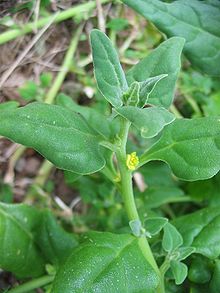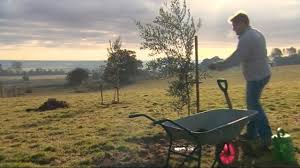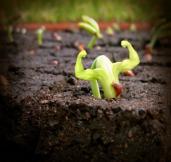Who loves Organic Green Leaves?
Winter is ending and so is the green leaves season. The variety of leaves will soon diminish and their size and appearance will be less amazing. Hurry up and get them while you can.!
Recently, at a dinner with friends, I was severely blamed. One of the attendees, a sworn carnivore, glanced at my plate and declared that I was eating his food’s food. "Excuse me?" I asked, trying to figure out from whom exactly I had stolen these excellent organic kale leaves that lay on my plate (in a salad, with a little sautéed cashew, grapefruit and homemade vinaigrette sauce – believe me, even people who never touch a green leaf with a stick glorify this salad. So simple to prepare that you don’t need a recipe). In short, I gave a questioning look to the guy, and he, with a satisfied smile, told me that his steaks were now thinner because I was stealing the food from the cows. So I did not want to correct him by saying that I don’t know of any cow that eats kale as part of her diet, probably not Hubeiza either, but since he raised the topic, it is worth knowing why we should definitely eat the food’s food.

There are green leaves for beginners, like lettuce or spinach, that even the more challenged cooks will quite quickly find what to do with them and how to incorporate them into the home menu. And there are those that send some people directly to the computer to ask Google (or you can call us at the store, we’re always happy to answer questions like these) what is that green thing in the box? These include the hubeizahs (in English Malva), goosefoots, dock, and sometimes mizuna. In addition, some of these leaves are received connected to the vegetables on which they grew – such as beets or carrots and such. Here is the place to emphasize that all of these "leaves" in the box that are attached to vegetables are not just additions or decorations – they are edible and wonderful on their own.
What to do with them? Lots of things. It is best to use organic green leaves, just like organic vegetables, in their original form – that is, without cooking. For those of you who have trouble imagining themselves nibbling on a hubeiza leaf or pleasurably chewing a fresh kale leaf, I will tell you that the green leaves become very tasty once they are accompanied by something sour – like grapefruit, green apple or a little lemon, and if you mix these ingredients in a fresh (meaning recently picked) and refreshing shake in the morning, your entire day will look different, and the cup of coffee will look like a poor substitute for the first drink of the day.
For those who prefer a drink that is slightly less thick, you can also squeeze fresh juice, but this is inferior to the shake in the sense that squeezed juices contain less fruit / vegetable/ leaves components because some of the plant remain in the juicer, especially fibers that should also be consumed. However, no matter how you like it, green juice is still preferable to many other alternatives. A good option for beginners – Juice the following together: the green leaves that are in the fridge, a generous serving of green apple, a bit of lemon (include the peel, it's even tastier) and if you want, a small slice of ginger or turmeric (their taste is hardly noticeable in a glass of juice, and the health benefits are significant). You will have a delicious and healthy drink.
More nice ideas for green shake recipes can be found here, but in general there are a lot of them on the web. Anyone can find lots of combinations to experiment and check in order to find what tastes they prefer. Green shakes are also a great base for additions of all sorts of "super foods" like chia, goji berry, nuts, etc.
Leaves, similar to organic vegetables, should be stored wisely to extend their time in the refrigerator and reduce the risk of spoiling before deciding how we want to eat them. In general, if the leaves are connected to the vegetable, it is best to disconnect them as quickly as possible, since the vegetable (that is, the root) is used as emergency storage for the green leaves; they store sugars and other good things to be used by the leaves during emergencies. When you remove the root from the ground, this is exactly what the leaves consider to be an emergency, so if we do not cut off the leaves, they will begin “sucking” all those nutrients from the root. Make sure to store everything in the bottom of the refrigerator where it is cooler and to keep the leaves dry (if they are received wet from rain, or you decide to wash all the organic mud that’s stuck on them – dry them very well before putting them in the refrigerator).
More interesting posts about green leaves can be found here.
Have a great green , warm, wet and flowering week!
Lavrioot!
Yours,
Maggie and the garden staff
Organic vegetable baskets (draft only):
Leeks
Celery root
cabbage
Swiss Chard
Radishes
Tomatoes
Cucumbers
lettuce
Orange beets
Pastel carrots, yummy …
onions
In the large organic vegetable baskets, also:
mint
Curly lettuce
Kohlrabi
Fennel
Organic fruit baskets:
Bananas
Papaya
And oranges
In the large organic fruit baskets, also:
Sweeties
More oranges
And more bananas











